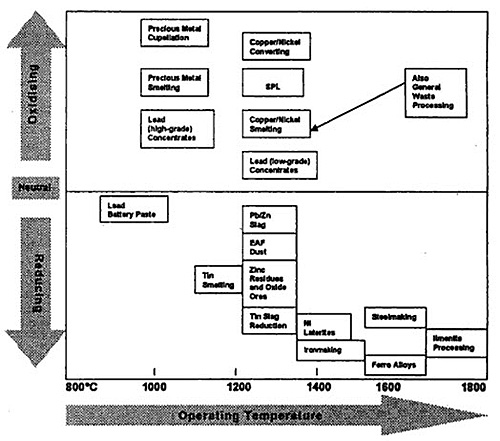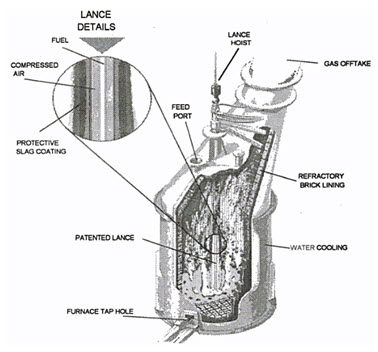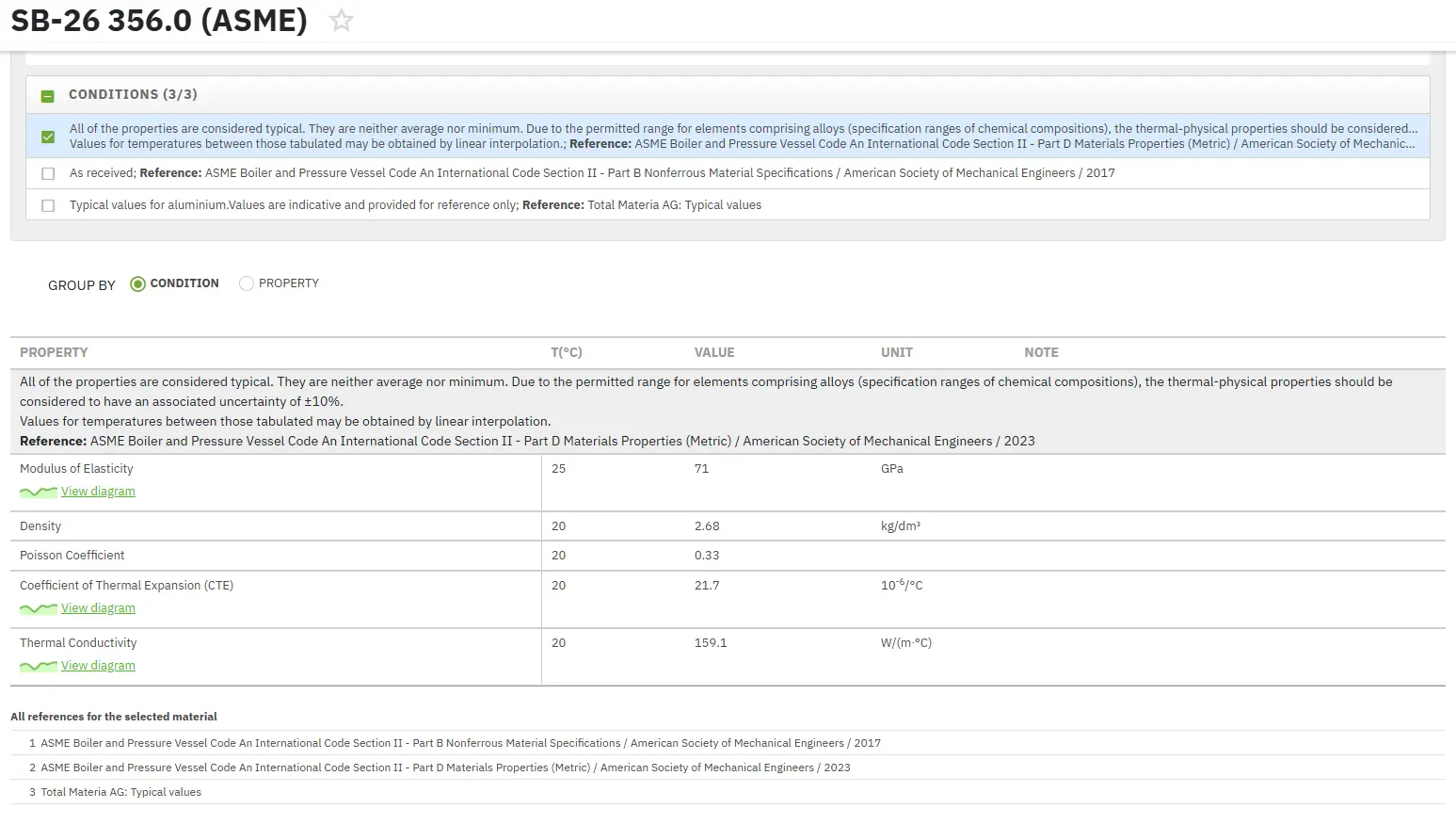Ausmelt / Isasmelt Matte Smelting: Part Two
Abstract
One of the additional uses of Ausmelt technology is to allow for the recovering of copper from non-sulfide materials, particularly slags and sludges.
Most of the energy for smelting is obtained from oxidizing the concentrate's Fe and S. The vertical lance consists of two pipes-the inner for supplying supplementary hydrocarbon fuel, the annulus for supplying oxygen-enriched air.
The Technology
One of the additional uses of Ausmelt technology is to allow for the recovering of copper from non-sulfide materials, particularly slags and sludges. Its ability to control air and fuel inputs means that conditions can be changed from oxidizing to reducing without transferring the material to a second furnace. This is particularly effective for smelting Cu/Ni hydrometallurgical residues.
The Technology can be applied to a wide range of applications and uses. This flexibility is due to its inherent ability to be operated and controlled over a wide range of oxygen potentials, from strongly oxidizing, neutral, through to strongly reducing. Operating temperatures range from 900°C (lead) to 1400°C and above (ferrous applications). This flexibility is shown in Figure 2.

Figure 2: Operating Flexibility of Ausmelt Technology
The Ausmelt furnace system is based on the use of a top submerged lance to inject combustion gases and fuel into a molten slag bath. The main features of the technology are illustrated in Figure 3.

Figure 3: Features of Ausmelt Technology
The technology provides a variety of benefits and features including:
- Submerged injection resulting in rapid mixing and fast reaction rates
- High reaction intensity allowing a high level of productivity per unit area of furnace. This minimizes the heat losses and fuel requirements per unit of product
- The use of non-consumable lances, using controlled cooling to solidify slag on its outer surface, protecting it from attack in a highly aggressive environment
- The use of a range of fuels, including coal, natural gas and fuel oils. This allows those fuels most readily and economically available to be used
- The ability to use oxygen enriched air to raise productivity, reduce offgas volumes and increase acid gas tenors when needed
- The capability to easily control the degree of oxidation and reduction by adjusting the fuel to oxygen ratio in the lance, and the addition of reductant coal with the feed
- The use of a stationary, well-sealed reactor to minimize fugitive emissions
- The ability to implement installations as either new plants or in retrofit installations
- The ability to use simple agglomeration and feed-rate control systems
- Waste heat recovery, when required, using conventional equipment
- A plant that is simple to operate and does not require a large number of highly skilled operators
- The use of advanced control systems to improve process control and product quality
- High level control of the process chemistry to ensure that the slag produced is disposable without further treatment
- High level control of the process chemistry for removal of impurities such as arsenic, antimony, bismuth and halides
Summary
Ausmelt and Isasmelt smelting is done in vertically aligned cylindrical furnaces ~3.5 m diameter and 12 m high. The smelting entails:
- Dropping moist concentrate, flux and recycle materials into a molten matte/slag bath in a hot furnace
- Blowing oxygen-enriched air through a vertical lance into the matte/slag bath
Most of the energy for smelting is obtained from oxidizing the concentrate's Fe and S. The vertical lance consists of two pipes-the inner for supplying supplementary hydrocarbon fuel, the annulus for supplying oxygen-enriched air. The outer pipe penetrates ~0.3m into the bath. The inner pipe ends ~1 m above the bath. The oxygen-enriched blast is swirled down the lower part of the lance by helical swirl vanes. This causes rapid heat extraction from the lance into the cool blast and solidification of a protective slag coating on the lance`s outer surface. This is a unique feature of the process. The principal product of the furnace is a matte/mixture. It is tapped into a hydrocarbon fired or electric settling furnace. The products, after settling, are 60% matte and 0.7% Cu slag.
Find Instantly Precise Material Properties!
Total Materia Horizon contains physical, thermal and electrical properties for hundreds of thousands of materials, for different temperatures, and much more.

Get a FREE test account at Total Materia Horizon and join a community of over 500,000 users from more than 120 countries.